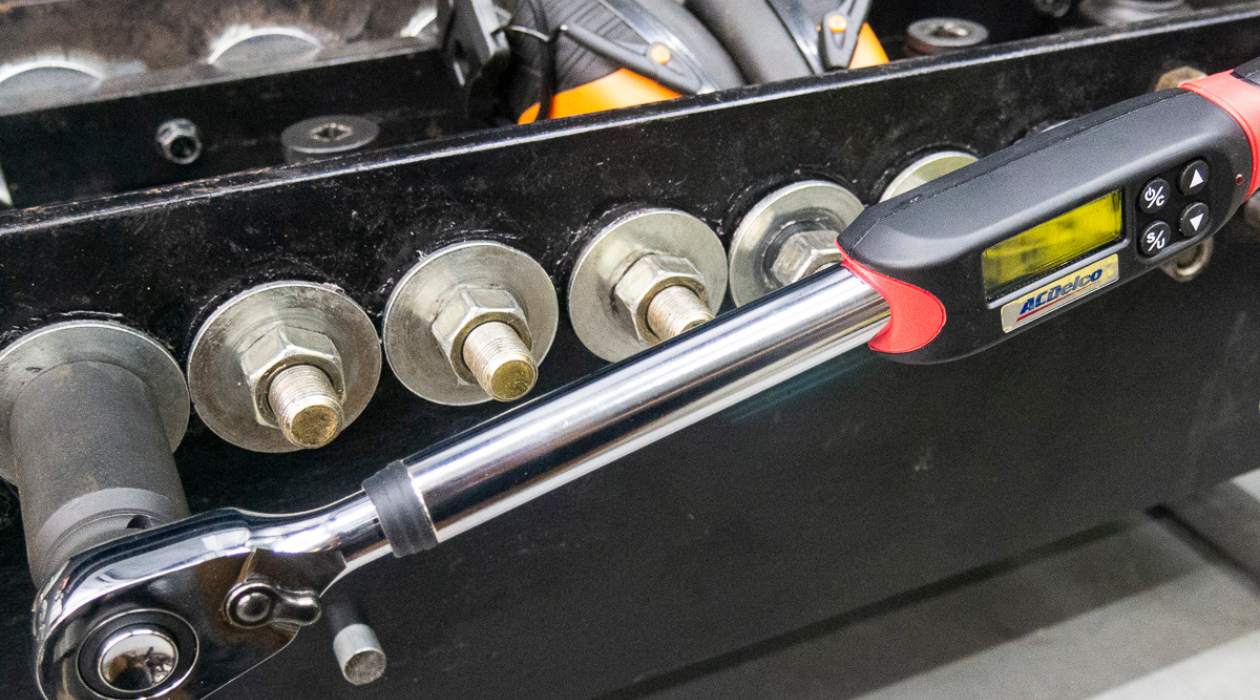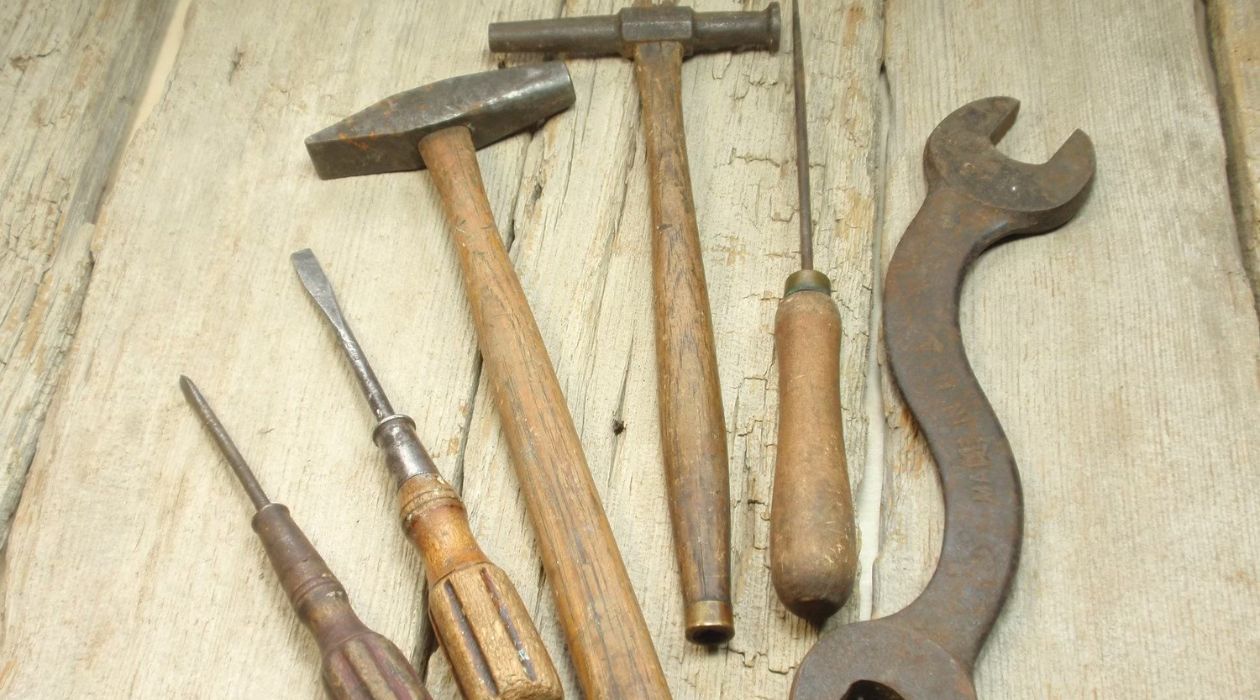

Articles
Why Are Hand Tools Important
Modified: October 20, 2024
Learn why hand tools are essential for your projects and get expert articles on how to choose the right tools for the job. Improve your DIY skills today!
(Many of the links in this article redirect to a specific reviewed product. Your purchase of these products through affiliate links helps to generate commission for Storables.com, at no extra cost. Learn more)
Introduction
Hand tools have been an integral part of human civilization for centuries. From the simplest implements like hammers and wrenches to more complex devices like drills and saws, these tools have played a crucial role in building, repairing, and creating various objects.
Hand tools are handheld devices or implements that are powered by manual force. They are used to perform a wide range of tasks, including construction, woodworking, plumbing, automotive repair, gardening, and more.
In this article, we will explore the importance of hand tools and how they contribute to various industries. We will discuss the benefits of using hand tools, the different types available, proper usage and maintenance, as well as safety precautions to keep in mind when working with these tools.
So, why are hand tools important? Let’s delve deeper into their significance and discover why they continue to be indispensable in today’s modern world.
Key Takeaways:
- Hand tools have been essential throughout history, offering versatility, precision, and a connection to traditional craftsmanship. Their benefits include portability, cost-effectiveness, and skill development, making them indispensable for professionals and DIY enthusiasts.
- Proper use, maintenance, and safety precautions are crucial for maximizing the longevity and performance of hand tools. By choosing the right tool, following safety guidelines, and practicing regular maintenance, individuals can work efficiently, achieve professional-quality results, and ensure their safety in every task.
Read more: Why Use Hand Tools
Definition of Hand Tools
Hand tools can be defined as any type of device or implement that is powered by manual force and used for various tasks. These tools are typically operated directly by hand without the need for external power sources such as electricity or batteries.
Hand tools come in a wide array of shapes, sizes, and designs, each serving a specific purpose. They are designed to be portable, easy to handle, and capable of performing specific tasks with precision and efficiency. Unlike power tools, which rely on electricity or other power sources, hand tools are manually operated, giving the user complete control over their actions.
The design and materials used in hand tools may vary depending on the intended use. Some common materials used for hand tool construction include steel, aluminum, wood, and plastic. The choice of material often depends on factors such as durability, strength, and weight.
Hand tools are essential in a wide range of industries and applications. They are commonly used in construction and carpentry for tasks such as measuring, cutting, and fastening. Plumbers rely on hand tools for pipe fitting and repairs. Electricians use hand tools for wire stripping, crimping, and installation. Mechanics employ hand tools for automotive repairs and maintenance. Gardeners and landscapers utilize various hand tools for tasks like pruning, digging, and planting.
Overall, hand tools are versatile, reliable, and indispensable in countless fields. Their simplicity and ease of use make them essential for both professionals and DIY enthusiasts alike.
History of Hand Tools
The use of hand tools dates back to the early days of human civilization. Our ancestors discovered the power of simple tools made from stone, bone, and wood, which greatly enhanced their ability to hunt, gather, build shelters, and create various objects.
In the Stone Age, hand tools were basic and primarily made from natural materials. Tools such as hand axes, scrapers, and arrowheads were crafted from stones by chipping and flaking techniques. These tools were used for cutting, scraping, and piercing materials like wood, animal hides, and plants.
As time progressed, humans developed metallurgy skills and began using metals like copper and bronze to make more durable and sophisticated hand tools. This marked the beginning of the Bronze Age, a period of technological advancement that greatly influenced the evolution of hand tools.
During the Middle Ages, blacksmiths played a vital role in hand tool production. They used heat and forging techniques to shape metals like iron and create tools such as hammers, chisels, and saws. Hand tool design continued to improve, allowing for greater precision and efficiency.
The Industrial Revolution in the late 18th century had a profound impact on the manufacturing of hand tools. With the advent of steam power and mass production techniques, hand tools were produced on a larger scale and became more affordable and accessible.
Throughout the 19th and 20th centuries, hand tool design continued to evolve, with advancements in materials and manufacturing processes. High-quality steel replaced iron, improving durability and performance. Ergonomic handles and grips were introduced to enhance comfort and reduce fatigue during prolonged use.
In recent years, technological advancements have further revolutionized hand tool design and production. Modern hand tools often incorporate innovative features such as adjustable settings, ergonomic designs, and even battery-powered assistance for enhanced performance.
With each era, hand tools have evolved and adapted to meet the ever-changing needs and demands of different industries. Today, hand tools continue to play a crucial role in construction, woodworking, plumbing, automotive repair, gardening, and many other fields, enabling us to execute tasks with precision and efficiency.
The history of hand tools is a testament to human ingenuity and the constant drive to create better tools and improve our ability to work with our hands.
Importance of Hand Tools in Various Industries
Hand tools play a vital role in numerous industries, providing essential support in a wide range of tasks. Their importance stems from their versatility, portability, and ability to provide precise control and accuracy. Let’s explore the significance of hand tools in various industries:
1. Construction: Hand tools are indispensable in the construction industry. From measuring and marking to cutting, nailing, and fastening, hand tools enable workers to accurately and efficiently carry out tasks. Tools like hammers, screwdrivers, levels, and tape measures ensure precise workmanship and help ensure the structural integrity of buildings.
2. Carpentry and Woodworking: Hand tools are essential in carpentry and woodworking. Whether it’s shaping, cutting, or joining wood, tools like saws, chisels, planes, and drills allow craftsmen to create intricate and precise designs. Hand tools provide the necessary control and finesse required for detailed woodworking projects.
3. Plumbing: Plumbers heavily rely on hand tools for pipe installation, repairs, and maintenance. Wrenches, pipe cutters, and pliers are essential tools in tackling plumbing tasks. These hand tools enable professionals to install and secure plumbing fixtures with precision and ensure leak-free connections.
4. Automotive Repair: Mechanics utilize a wide array of hand tools for automotive repairs. Whether it’s wrenches, pliers, socket sets, or screwdrivers, these tools enable technicians to dismantle, repair, and reassemble different components of vehicles. Hand tools are crucial for troubleshooting, fixing engine issues, and performing routine maintenance.
5. Gardening and Landscaping: Hand tools are indispensable for gardening and landscaping tasks. Tools like shovels, rakes, pruners, and trowels enable gardeners to dig, weed, prune, and plant with precision. Hand tools aid in creating beautiful landscapes and maintaining the health of plants.
6. Electrical and Electronics: Electricians and electronics technicians rely on hand tools for various tasks. Wire strippers, pliers, screwdrivers, and crimping tools are used for wiring installations, circuit repairs, and component assembly. Hand tools provide the necessary control and accuracy needed in working with electrical connections.
7. General DIY Projects: Not limited to professionals, hand tools are also essential for do-it-yourself (DIY) enthusiasts. Whether it’s simple home repairs, furniture assembly, or crafting projects, hand tools allow individuals to take on tasks efficiently and effectively.
The importance of hand tools in these industries lies in their ability to provide manual control and precision. They enable workers to perform tasks with accuracy, efficiency, and versatility. Hand tools are portable, easy to use, and do not require external power sources, making them accessible in various working environments.
Regardless of the industry, hand tools are crucial for professionals and DIY enthusiasts alike. They empower individuals to create, repair, and maintain with their own hands, allowing for a sense of accomplishment and self-sufficiency. Without hand tools, many tasks would be more challenging, time-consuming, and less precise, underscoring their significance in multiple industries.
Benefits of Using Hand Tools
Hand tools offer a multitude of benefits, making them indispensable in various industries and applications. While power tools have their place, hand tools provide unique advantages that make them essential for professionals and DIY enthusiasts alike. Let’s explore some of the benefits of using hand tools:
1. Portability: One of the key advantages of hand tools is their portability. They are lightweight and compact, allowing for easy transportation to different work locations. This convenience makes hand tools versatile and suitable for on-the-go tasks.
2. Precision and Control: Hand tools provide precise control, allowing for detailed and accurate work. Whether it’s a chisel for woodworking or pliers for electric wiring, hand tools allow for fine adjustments and delicate maneuvers. This level of precision is crucial for achieving professional-quality results.
3. Less Noise and Vibration: Compared to power tools, hand tools generate significantly less noise and vibration. This makes them ideal for situations where noise levels need to be minimized, such as working in residential areas or noise-sensitive environments.
4. No Dependency on Power Source: Hand tools do not require electricity or batteries to operate. This eliminates the need for power outlets or the hassle of charging batteries, making hand tools more convenient to use. They can be relied upon when working in remote locations or during power outages.
5. Lower Risk of Accidents: Hand tools are generally safer to use when compared to power tools. They have fewer moving parts and are less likely to cause severe injuries. Proper training and adherence to safety guidelines further minimize the risk of accidents.
6. Cost-Effectiveness: Hand tools are often more affordable than power tools, making them a cost-effective choice for individuals and businesses. Investing in a set of hand tools can provide long-term value, as they are durable and have a longer lifespan.
7. Simplicity and Ease of Use: Hand tools are often simpler to operate than power tools, requiring minimal training and setup. They are user-friendly, making them accessible to a wide range of skill levels, including beginners and DIY enthusiasts.
8. Increased Skill Development: Working with hand tools enhances manual dexterity and skill development. The process of using hand tools requires more finesse and attention to detail, allowing individuals to improve their craftsmanship and expertise over time.
9. Versatility: Hand tools come in a wide variety of types and designs, each serving a specific purpose. This versatility allows for multi-functional use, enabling a single tool to perform multiple tasks. This saves space and provides convenience in different situations.
10. Connection to Tradition and Craftsmanship: Hand tools have a rich history and are deeply connected to traditional craftsmanship. Working with hand tools can provide a sense of connection to the past and a deeper appreciation for the skills and techniques passed down through generations.
Hand tools offer a range of benefits that promote efficiency, precision, flexibility, and safety. Their simplicity, accessibility, and affordability make them essential tools for professionals and hobbyists alike. Whether you’re a seasoned craftsman or a weekend DIY enthusiast, utilizing hand tools can enhance your workmanship and allow you to accomplish tasks with skill and precision.
Invest in high-quality hand tools to ensure efficiency, precision, and safety in your work. Quality tools will last longer and provide better results.
Read more: Why Are Pillows Important
Types of Hand Tools
Hand tools come in a diverse range of types and designs, each suited for specific tasks and industries. These tools are essential for a wide array of applications, from construction and woodworking to plumbing and automotive repair. Let’s explore some of the most common types of hand tools:
1. Hammers: Hammers are versatile tools used for driving nails, breaking objects, and shaping materials. They consist of a handle and a head made from materials like steel or fiberglass. Different types of hammers include claw hammers, ball peen hammers, and sledgehammers.
2. Screwdrivers: Screwdrivers are essential for tightening and loosening screws. They are available in various sizes and types, including flathead, Phillips, and Torx screwdrivers. The tip of a screwdriver is designed to fit into corresponding screw heads for smooth rotation.
3. Wrenches: Wrenches are tools used for tightening or loosening nuts and bolts. They come in different sizes and designs, such as open-end wrenches, adjustable wrenches, and socket wrenches. Wrenches provide mechanical advantage for applying torque to fasteners.
4. Pliers: Pliers are versatile hand tools with two handles joined at a pivot point. They are used for gripping, bending, cutting, and holding objects. Different types of pliers include slip-joint pliers, needle-nose pliers, and locking pliers.
5. Saws: Saws are cutting tools used to make precise cuts in various materials. Hand saws, such as crosscut saws and hacksaws, are manually operated and commonly used in woodworking and metalworking. There are also powered hand saws, such as reciprocating saws and circular saws.
6. Chisels: Chisels are sharp-edged tools with a beveled cutting edge used for carving, shaping, and cutting hard materials like wood or metal. They are typically struck with a mallet or hammer to remove material or create precise cuts.
7. Files: Files are abrasive hand tools used for shaping, smoothing, and removing material. They consist of a handle and a series of parallel ridges or teeth along a flat or curved surface. Files are commonly used in metalworking and woodworking.
8. Measuring Tools: Measuring tools, such as tape measures, rulers, and calipers, are essential in accurately determining lengths, angles, and dimensions. They are used in a wide range of applications, from construction to crafting.
9. Utility Knives: Utility knives are versatile cutting tools with a retractable blade. They are commonly used for cutting materials like cardboard, plastic, or fabric. Utility knives facilitate precise and controlled cutting.
10. Levels: Levels are tools used for checking if a surface is straight or level. They have a bubble or vial with a liquid and an air bubble that indicates the levelness or plumbness of a surface. Levels are commonly used in construction and woodworking.
This is just a small selection of the many types of hand tools available. Other commonly used hand tools include wrench sets, socket sets, wire cutters, wire strippers, clamps, and many more, each serving a specific purpose in different industries and applications.
The choice of hand tools depends on the specific task at hand and the industry in which they are used. A well-equipped toolbox containing a variety of hand tools is essential for tackling a wide range of projects with precision and efficiency.
Proper Use and Maintenance of Hand Tools
Proper use and maintenance of hand tools are essential to ensure their longevity, functionality, and safety. By following a few guidelines, you can maximize the performance of your hand tools and keep them in optimal condition. Here are some tips for the proper use and maintenance of hand tools:
1. Choose the Right Tool for the Task: Select the appropriate hand tool for the specific task at hand. Using the right tool ensures efficiency, accuracy, and prevents unnecessary wear or damage to the tool.
2. Read and Follow Instructions: Familiarize yourself with the manufacturer’s instructions and guidelines for each tool. Pay attention to any safety warnings, usage tips, and maintenance recommendations provided.
3. Handle Tools with Care: Treat your hand tools with care to avoid unnecessary wear and damage. Avoid striking or using excessive force on hand tools that are not designed for such tasks.
4. Store Tools Properly: Store your hand tools in a clean, dry, and organized manner. Consider using a toolbox, wall hangers, or specific storage racks to keep tools protected and easily accessible.
5. Keep Tools Clean: Regularly clean your hand tools to remove dirt, debris, and any buildup that may affect their performance. Use a cloth or brush to clean the tool surfaces and ensure that moving parts are free from obstructions.
6. Inspect for Damage: Before using a hand tool, inspect it for any signs of damage, such as cracks, chips, or loose parts. Do not use damaged tools as they may pose a safety risk. Replace or repair them as needed.
7. Sharpen Blades and Cutting Edges: For tools with blades or cutting edges, such as saws, chisels, and knives, regularly sharpen them to maintain their cutting efficiency. Use appropriate sharpening tools or seek professional sharpening services if needed.
8. Lubricate Moving Parts: Lubricate applicable moving parts of your hand tools to ensure smooth operation. Consult the manufacturer’s recommendations for the appropriate lubricant and intervals for application.
9. Properly Use and Store Power Tools: If your hand tools are powered, such as drills or electric saws, ensure that you use and store them according to the manufacturer’s instructions. This includes proper usage of safety features and using the appropriate power source.
10. Regularly Inspect and Maintain: Perform routine maintenance checks on your hand tools. This may include tightening loose screws or bolts, replacing worn-out parts, and ensuring that handles and grips are secure.
By following these guidelines, you can prolong the lifespan of your hand tools and ensure their safe and efficient use. Regular maintenance and care will not only save you money in the long run but also enhance the quality of your workmanship. Remember, a well-maintained hand tool is an investment that will continue to serve you in various tasks for years to come.
Safety Precautions when Using Hand Tools
When working with hand tools, it is crucial to prioritize safety to prevent accidents and injuries. While hand tools may not be as powerful as their electric counterparts, they still require proper handling and precautionary measures. Here are some essential safety precautions to follow when using hand tools:
1. Wear Protective Gear: Always wear appropriate personal protective equipment (PPE) such as safety goggles, gloves, and ear protection when using hand tools. PPE can protect against flying debris, sharp edges, and excessive noise.
2. Inspect Tools: Before using any hand tool, carefully inspect it for any signs of damage, such as cracks or broken parts. Do not use tools that are damaged, as they can pose a safety risk. Replace or repair them before use.
3. Use Tools in Proper Conditions: Ensure that your work area is clean, well-ventilated, and properly lit. Avoid using hand tools in wet or slippery conditions as it can compromise your grip and lead to accidents.
4. Follow Proper Technique: Use hand tools in accordance with the recommended techniques and practices. Familiarize yourself with how each tool should be held, positioned, and manipulated to minimize the risk of injury.
5. Handle Tools with Care: Use hand tools with caution and avoid using excessive force or overexerting yourself. Maintain a firm grip on the tool and ensure your hands are positioned away from the tool’s sharp edges or moving parts.
6. Keep Hands and Fingers Clear: Ensure that your hands and fingers are kept clear from the point of operation. Do not place fingers in potential pinch points or near cutting edges. Use clamps or specific tools when necessary to secure workpieces.
7. Store Tools Safely: Store hand tools properly in designated storage areas or toolboxes when not in use. This prevents accidental contact and reduces the risk of injuries when searching for tools.
8. Keep Work Area Organized: Maintain a clean and organized work area to prevent tripping hazards or accidental contact with tools. Clear away clutter and ensure that tools are returned to their proper storage after use.
9. Avoid Distractions: Focus on the task at hand and avoid distractions that can divert your attention from using the hand tool safely. Limit interruptions and maintain a focused work environment.
10. Use the Right Tool for the Job: Ensure you are using the correct hand tool for the specific task you are performing. Using the wrong tool can lead to a loss of control and increase the risk of accidents.
11. Properly Maintain Tools: Regularly inspect, clean, and maintain hand tools to ensure their proper functioning. This includes sharpening blades, greasing moving parts, and tightening any loose screws or fasteners.
12. Seek Proper Training: If you are unfamiliar with a particular hand tool or technique, seek proper training and guidance from experienced individuals or professionals. Understanding how to use a tool correctly can prevent accidents and improve efficiency.
Remember, safety should always be the top priority when using hand tools. By following these safety precautions, you can minimize the risk of injuries and create a safe working environment. Stay vigilant, exercise caution, and prioritize proper tool usage to ensure safe and successful completion of your tasks.
Conclusion
Hand tools have been an integral part of human civilization for centuries, serving as indispensable devices for various industries and applications. From construction and woodworking to plumbing and automotive repair, hand tools enable us to build, create, repair, and maintain with precision and control.
The importance of hand tools lies in their versatility, portability, and ability to provide precise control. They offer a range of benefits, including portability, precision, lower noise levels, and cost-effectiveness. Hand tools also promote skill development and craftsmanship while connecting us to traditional methods of working.
Understanding the different types of hand tools available, as well as proper maintenance and safety precautions, is crucial for working efficiently and safely. By choosing the right tool for the task, inspecting tools for damage, and using proper handling techniques, accidents and injuries can be minimized.
Regular maintenance, such as cleaning, sharpening, and lubricating, enhances the longevity and performance of hand tools. Storing tools properly and practicing good organizational habits contribute to a safe and efficient work environment.
Using hand tools requires attentive focus and adherence to safety guidelines. Wearing appropriate personal protective equipment, keeping hands and fingers clear from the point of operation, and avoiding distractions are key to preventing accidents.
In conclusion, hand tools continue to be essential in various industries and for DIY projects. Their simplicity, reliability, and versatility make them timeless tools that empower individuals to accomplish tasks with skill and precision. By understanding the importance, types, proper use, maintenance, and safety precautions of hand tools, we can work efficiently, achieve professional-quality results, and ensure our safety in every task we undertake.
Frequently Asked Questions about Why Are Hand Tools Important
Was this page helpful?
At Storables.com, we guarantee accurate and reliable information. Our content, validated by Expert Board Contributors, is crafted following stringent Editorial Policies. We're committed to providing you with well-researched, expert-backed insights for all your informational needs.















0 thoughts on “Why Are Hand Tools Important”